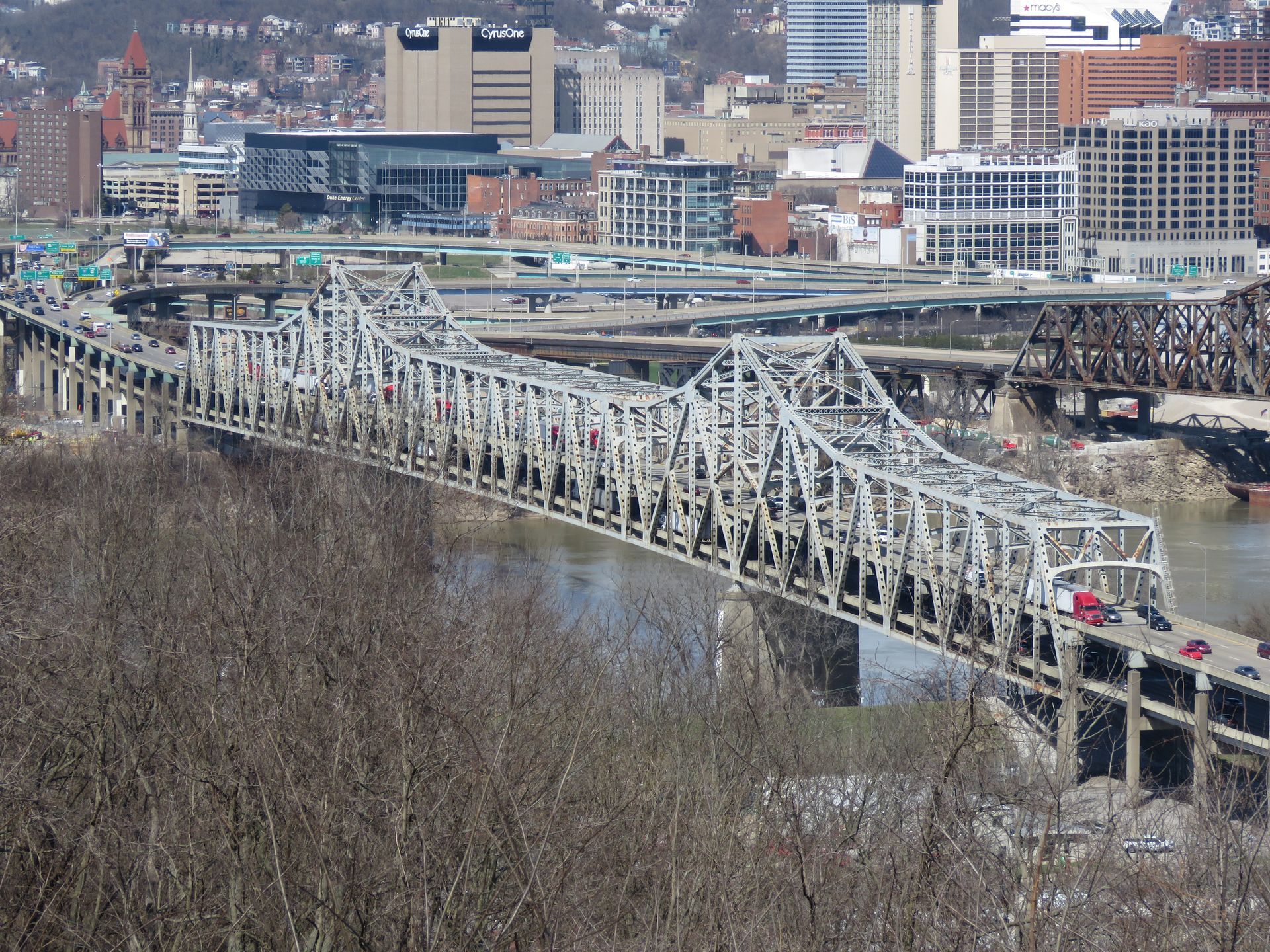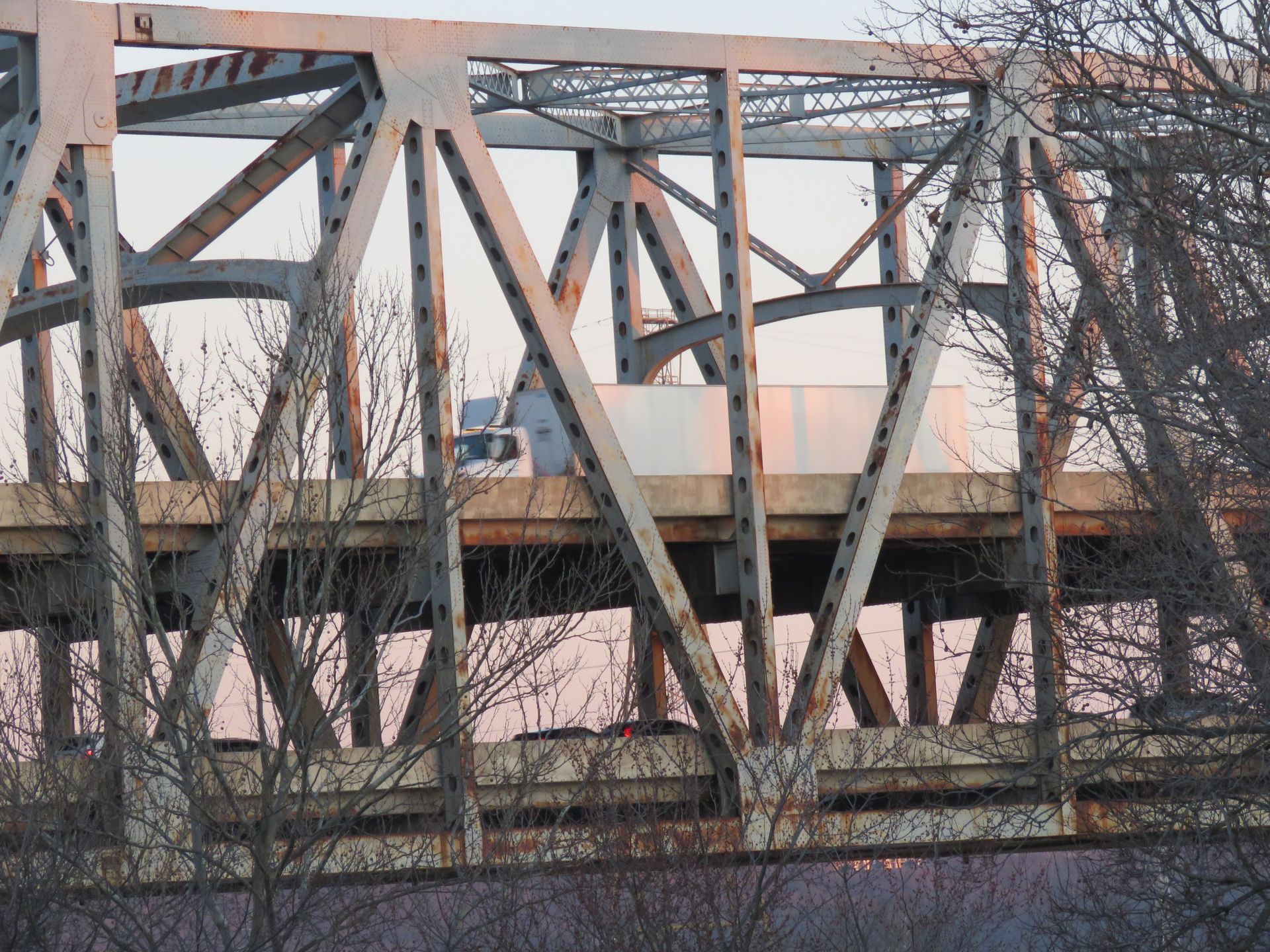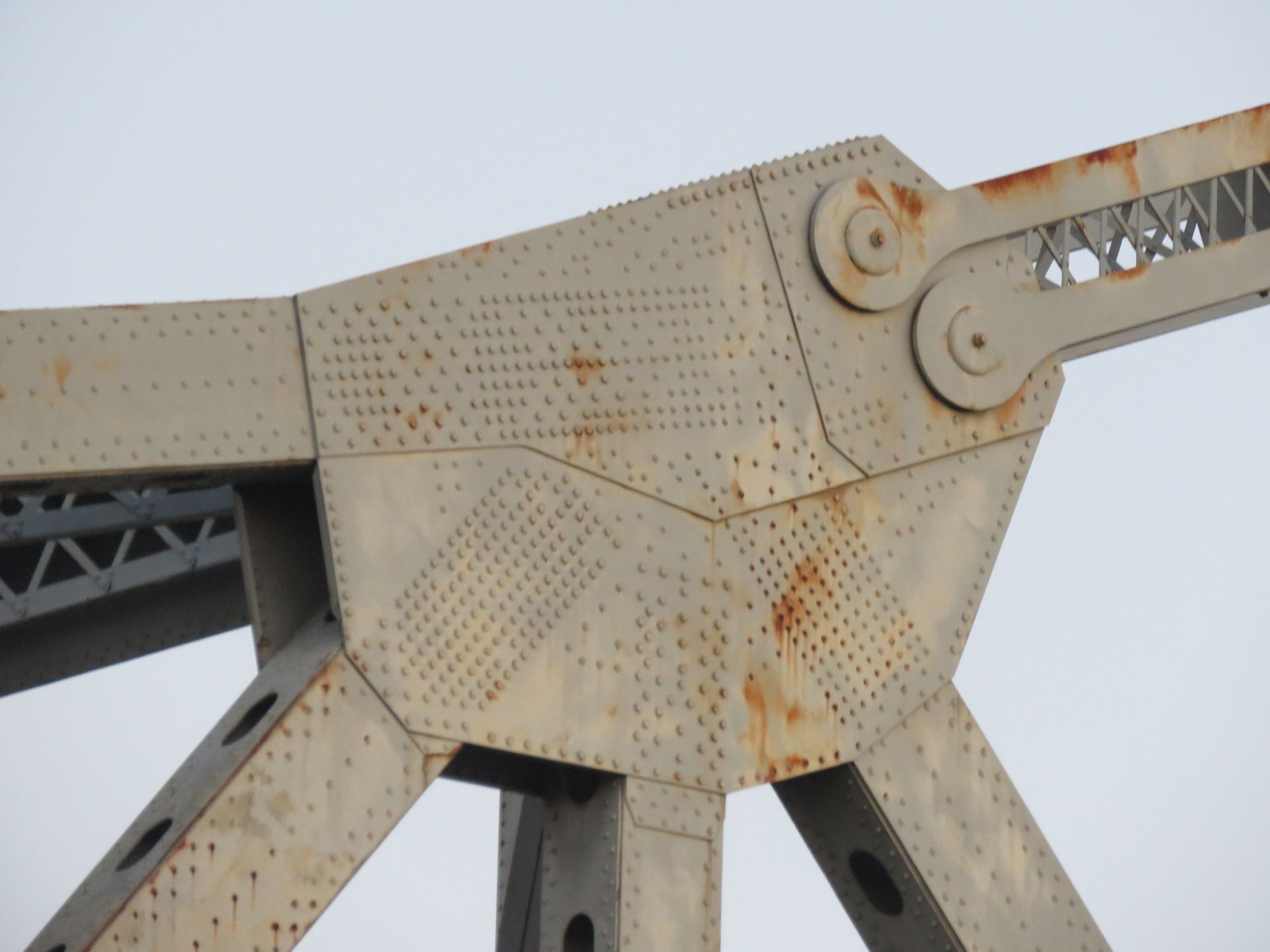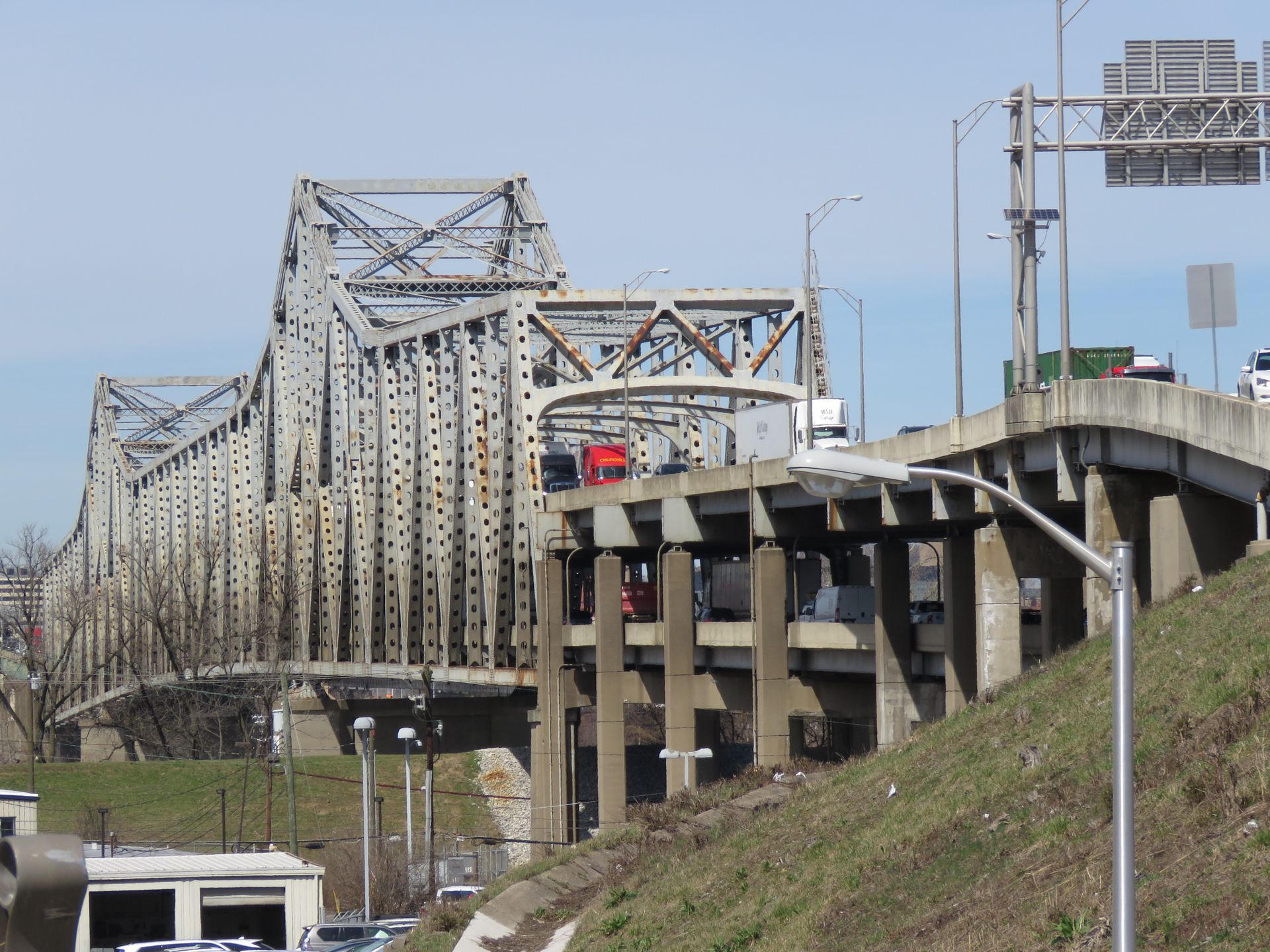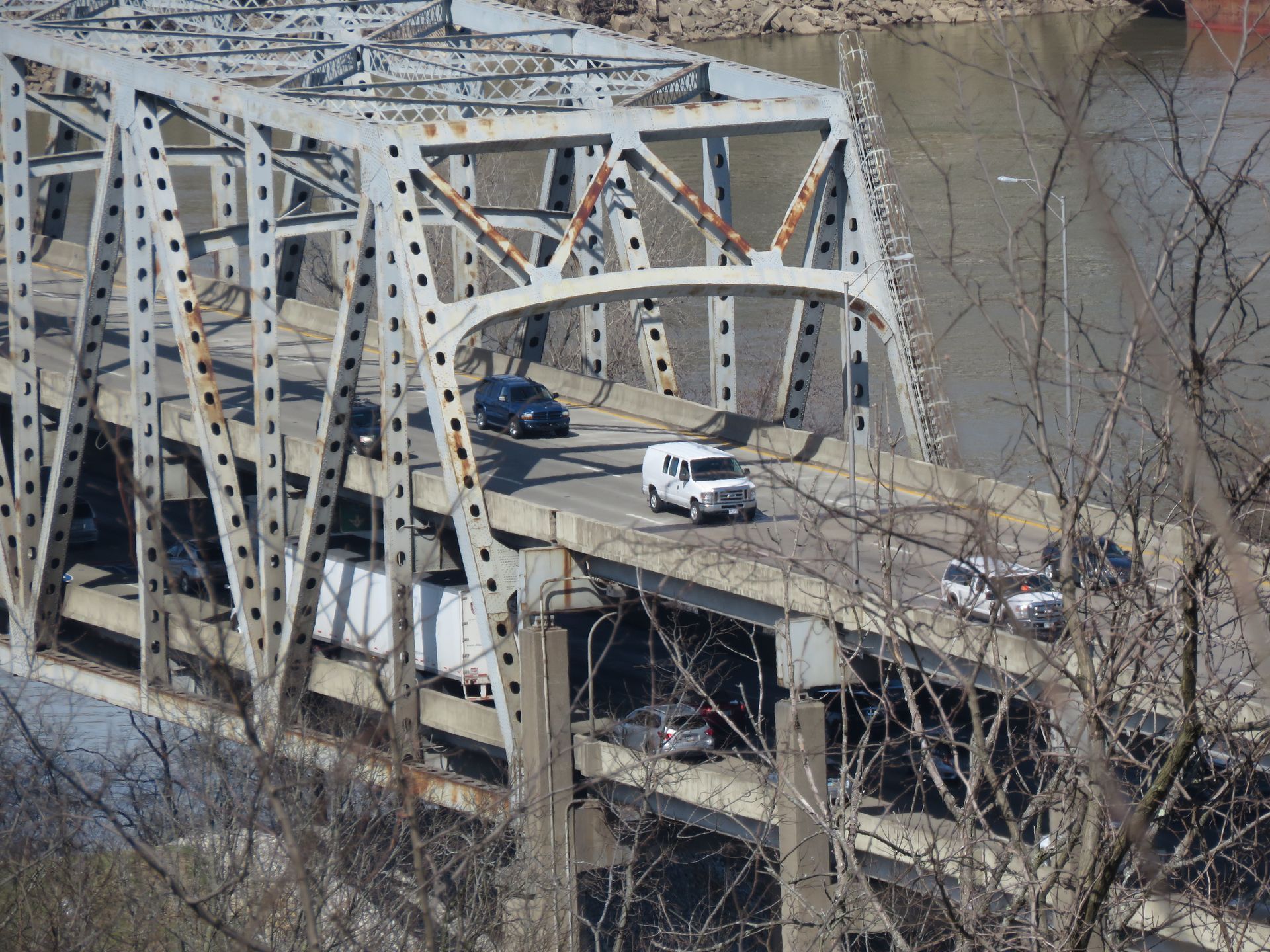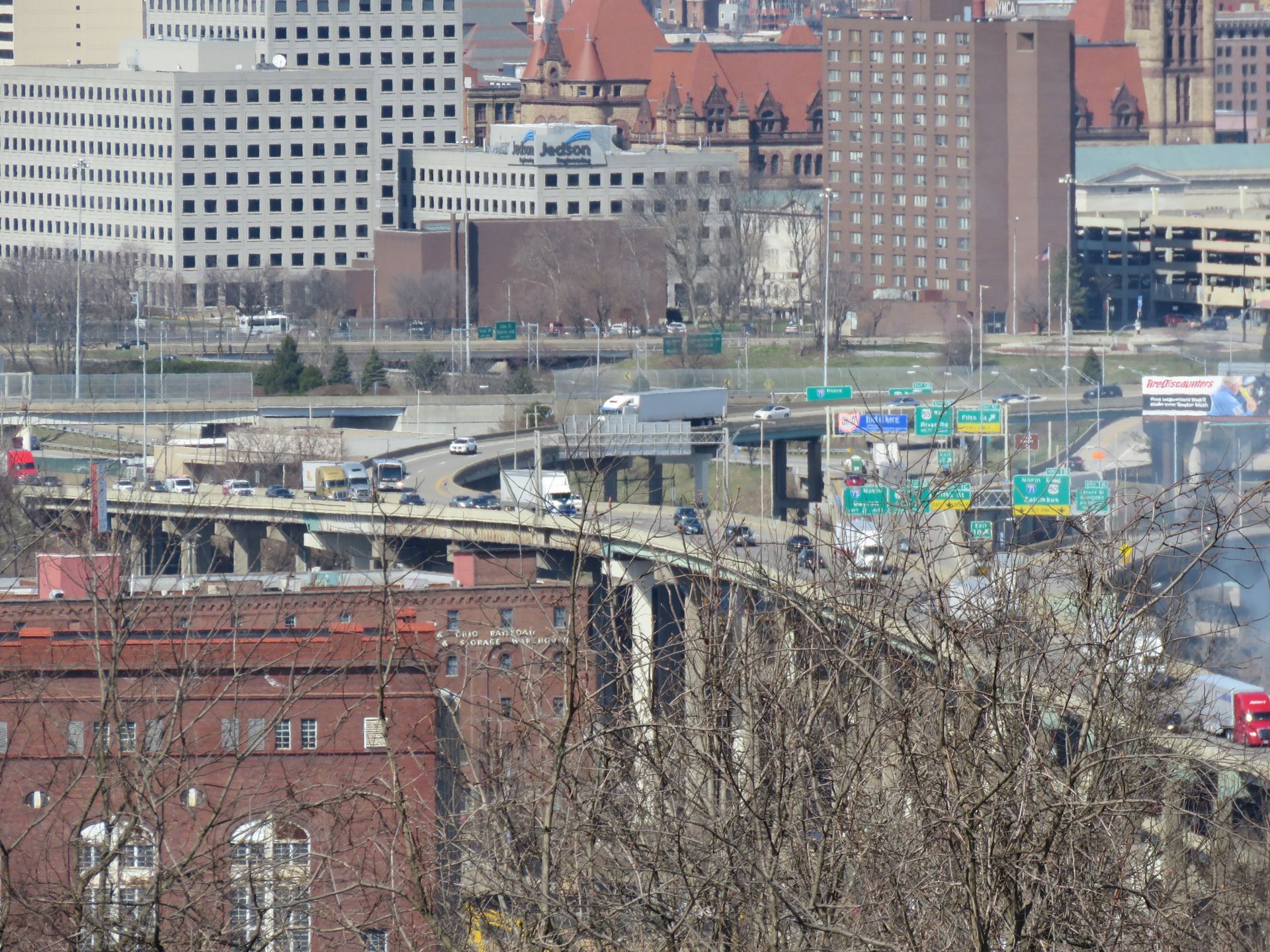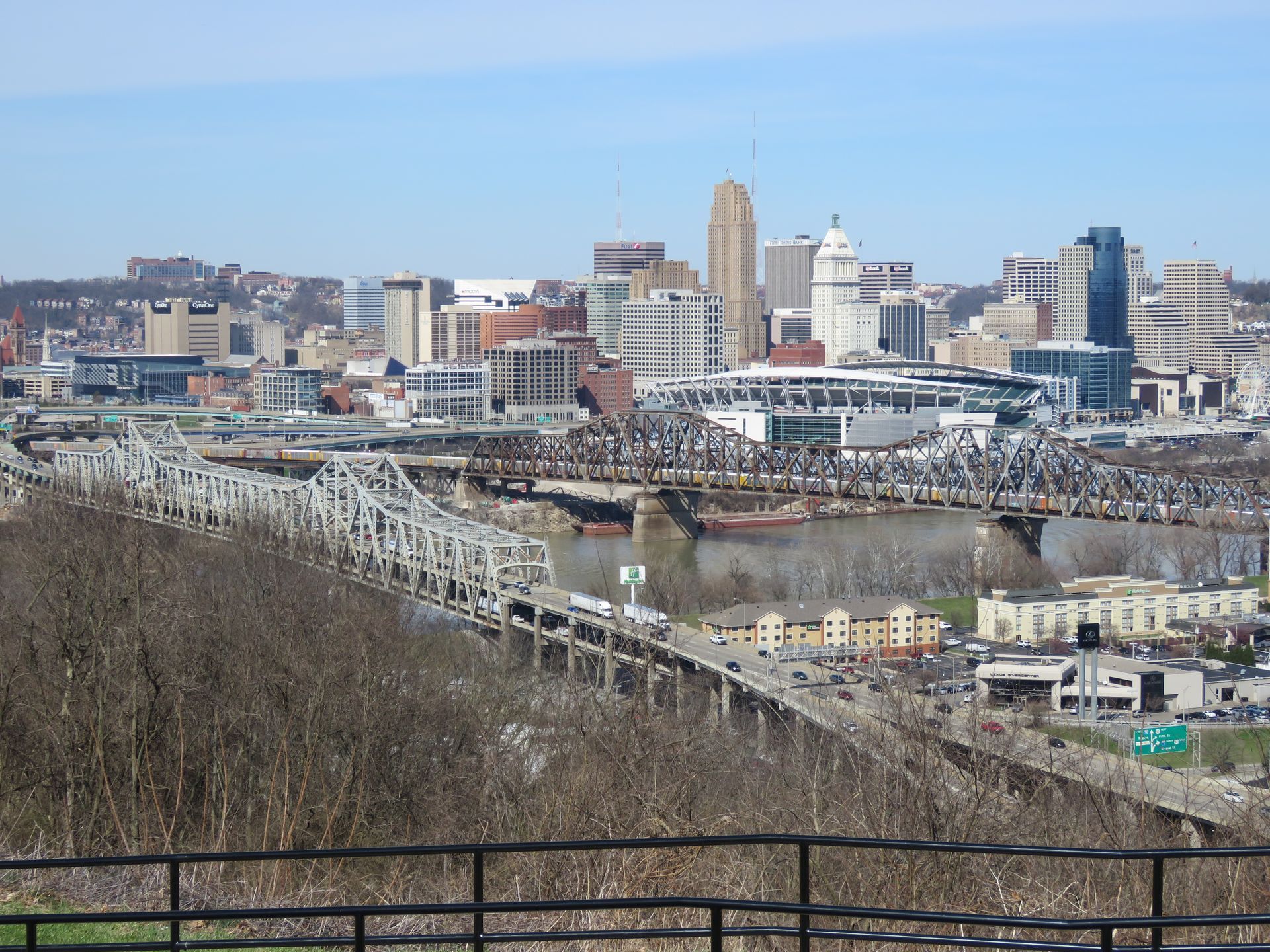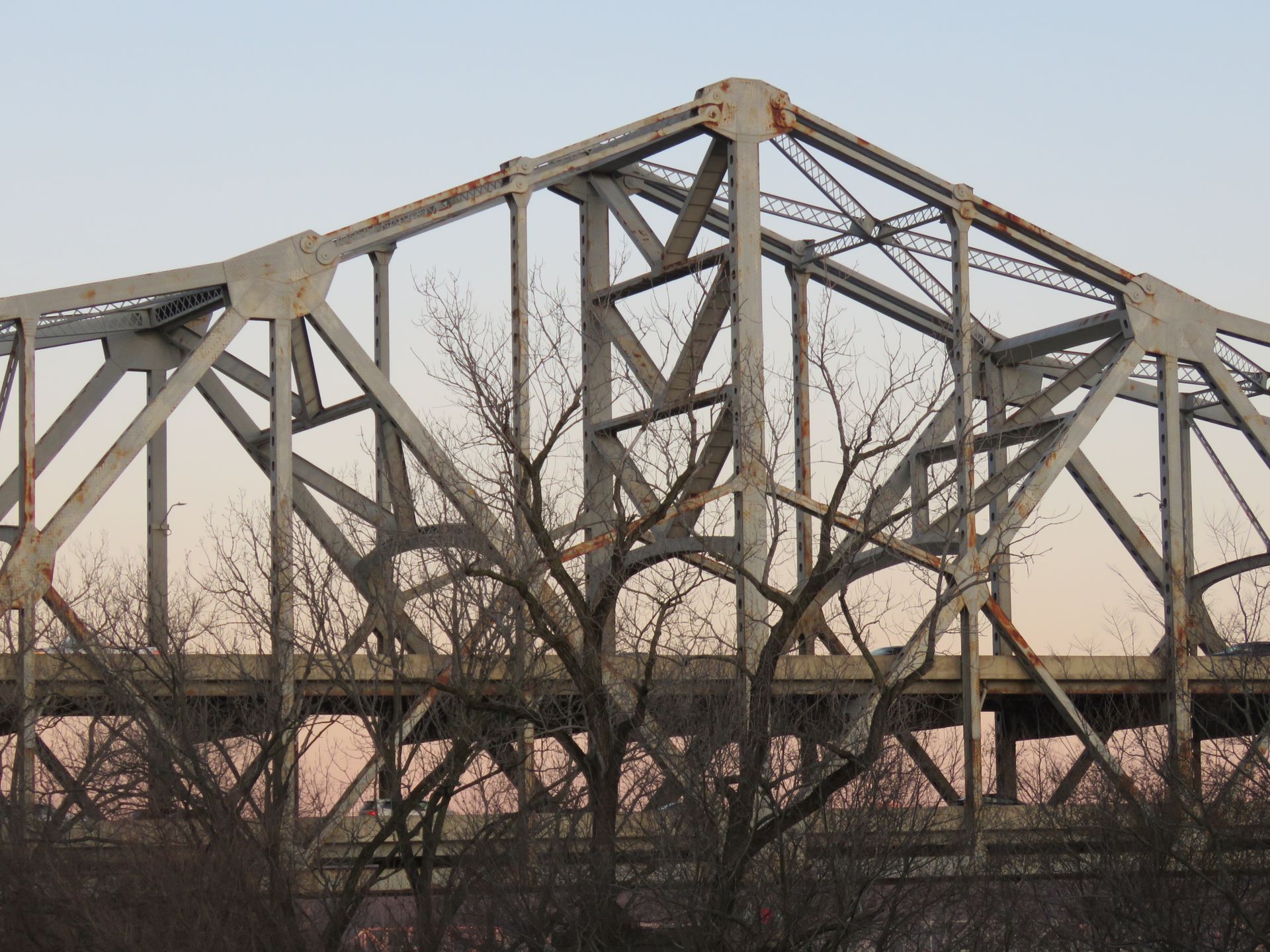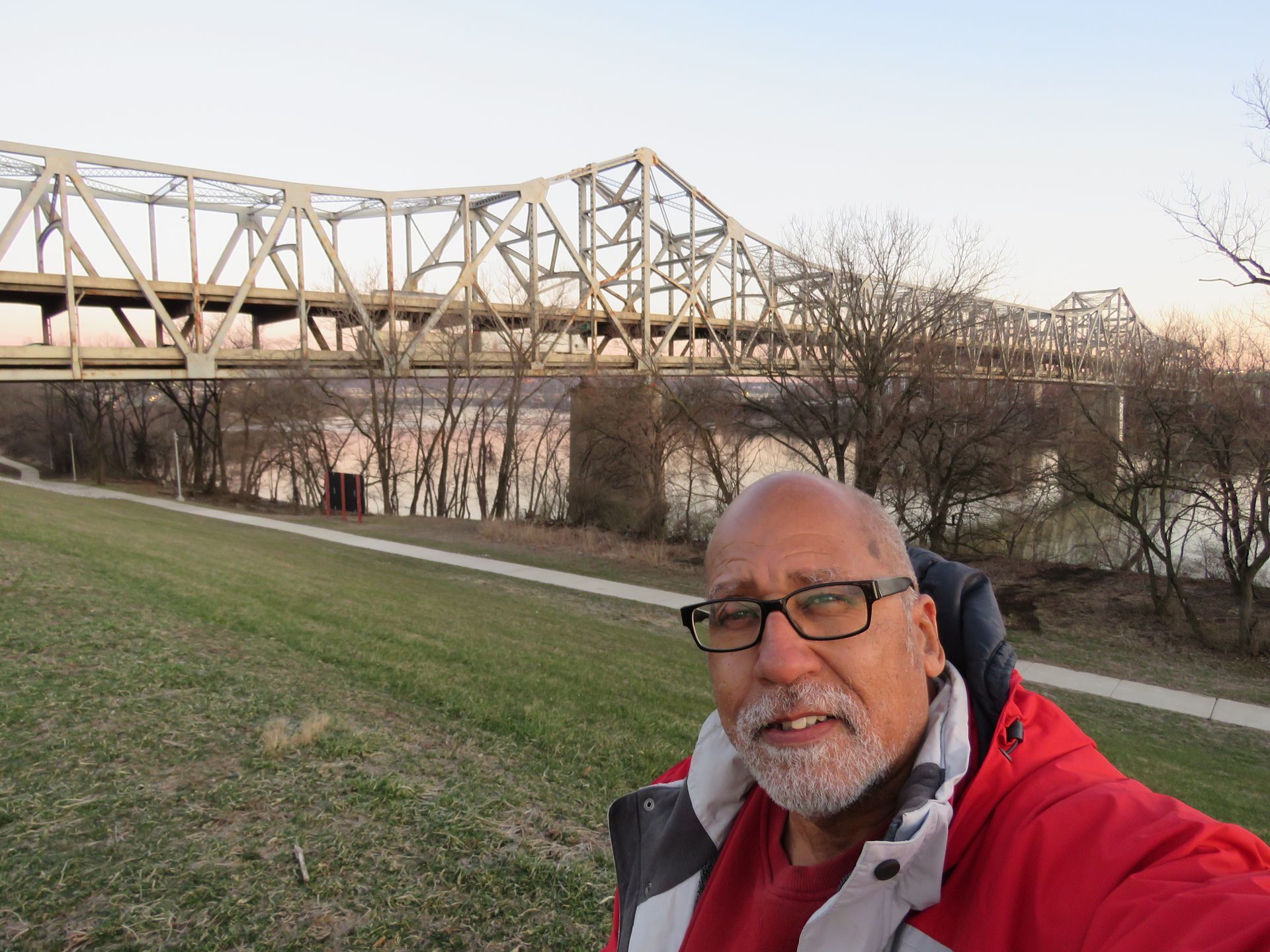BUILDING
BRIDGES
THE IRON AND CONCRETE WINGS OF AMERICA
Brent Spence Bridge, Covington, KY - Cincinnati, OH
One of Two Double-Decker bridges on the Ohio River System
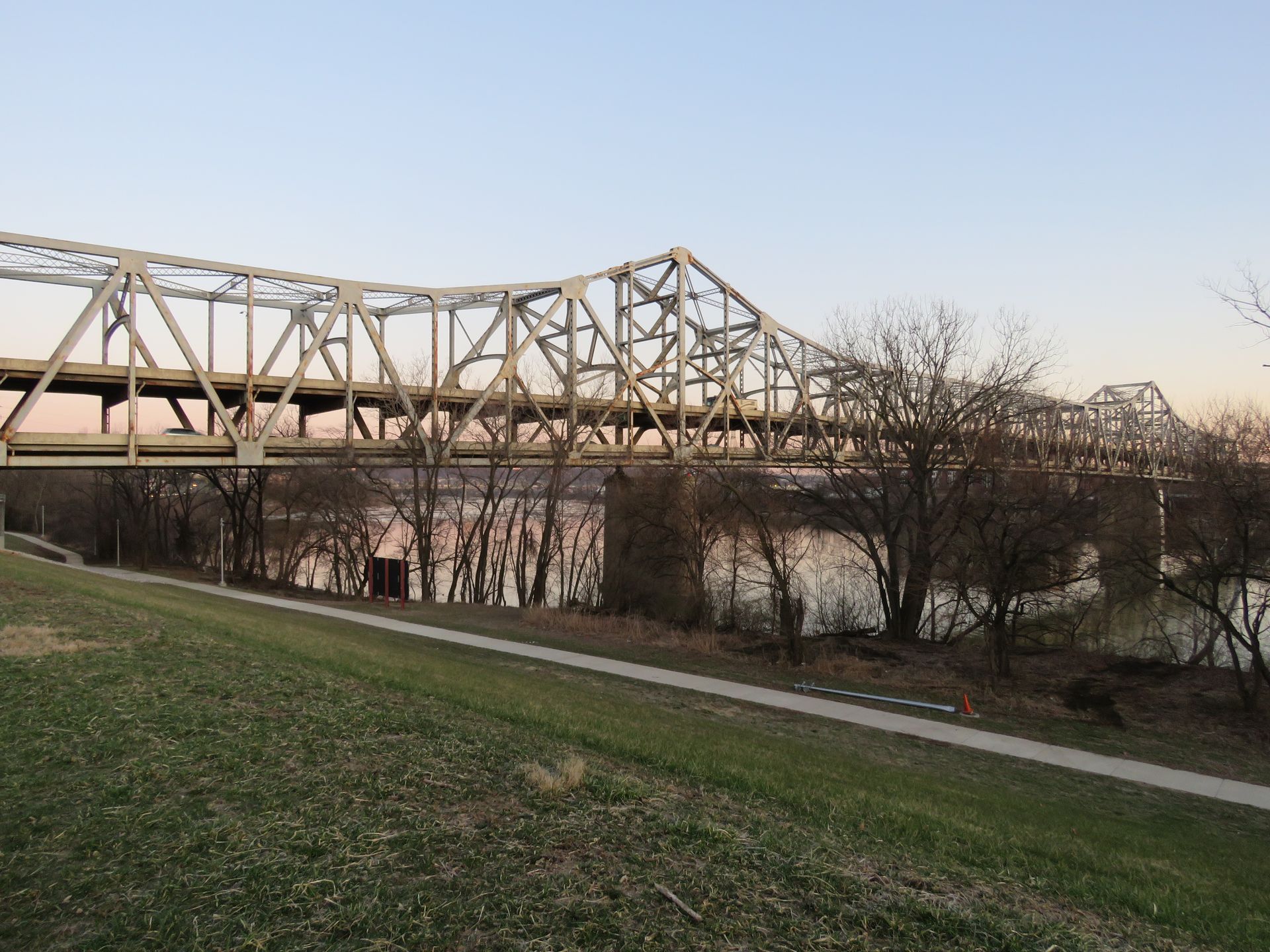
There is a lot of buzz right now over one of the largest bridge construction and reconstruction projects in America's bridge family.
Built in 1963 at a cost of $10 million, the Brent Spence Bridge spans the Ohio River between Covington, Kentucky and Cincinnati, Ohio.
Because of the odd meandering of state boundaries on the river, the entire bridge is located within and maintained by the Commonwealth of Kentucky. Among the more than 30 double-decker bridges in the United States, this bridge is one of only two double-decker bridges on the Ohio River. The northbound lanes going into Ohio across the river are on the bottom tier, and the southbound lanes bound for Kentucky are on the top tier.
The bridge is a three-span, riveted continuous-cantilevered Warren through truss measuring 1,736.4 feet long. The channel span above the river barge traffic is 830.8 feet long. It was built by the American Bridge Company of New York, and the chief engineer on the project was famed designer Ralph Modjeski, who also designed the Benjamin Franklin Bridge in Philadelphia, the Huey P. Long Bridge west of New Orleans, and two of the four bridges across the Mississippi River at Memphis.
Named for longtime Kentucky U.S. Congressman Brent Spence, the 6-lane bridge was immediately designated the Ohio River crossing for Interstates 71 and 75, which automatically overloaded its traffic count. Originally designated comfortably for about 80,000 vehicles a day, it now carries 160,000 cars and trucks every day. It was expanded to eight lanes in 1985 when the emergency stopping lanes were incorporated into forward traffic. But two years ago, the American Transportation Research Institute ranked the Brent Spence congestion bottleneck the second worst in the nation for trucks. It has been the scene of several terrible accidents, some that damaged the truss and the bridge deck, closing it down for days that sent thru traffic flooding onto several other river crossings, including the I-275 bypass around the area. Rehabilitation and repair of the bridge was estimated at $21 million dollars back in 2018.
Communities, the federal government, traffic experts and commuters hope the answer to the congestion is a $1.635 billion dollar construction and rebuild of the Brent Spence bridge. The Brent Spence Bridge Corridor Project, announced by President Biden, Governors Beshear of Kentucky and DeWine of Ohio, along with transportation administrators on December 29, 2022 would result in an entirely new companion bridge across the river just west of the current bridge, that would specifically carry five lanes of northbound and five separate lanes of southbound I-71-75 thru traffic with limited access only. Meanwhile, the current Spence bridge would become local-traffic-only, reverting to the original 1963 three lanes northbound and three lanes southbound, and the emergency shoulder lanes restored. The new companion bridge would not be a double-decker design like the current bridge; instead, it's proposed to be a steel arch, cable-tied bridge.
Administrators with the Brent Spence Bridge Corridor Project have put together a flyover of the construction rebuild, starting from the South Dixie Highway-U.S. Highways 25-42-127 interchange in Covington, across the river and up to the Western Hills Viaduct in Cincinnati. Copy and past the flyover here: https://youtu.be/Z8Y_XbIv_9c
Personal note: Having traveled the current Brent Spence Bridge many times going to and from Tennessee when I worked in Columbus, Ohio, getting on and off the bridge is not the problem. With immediate exits and entrances on either end and virtually no time to react to them, the problem is cars and trucks merging into each other to take those entrances and exits at the last minute and not having enough room to do that safely. The re-design hopes to eliminate those quick lane changes, to allow more time and space for traffic to decide where it needs to go, while preserving the elegance of one of the most majestic bridges on the Ohio River.
